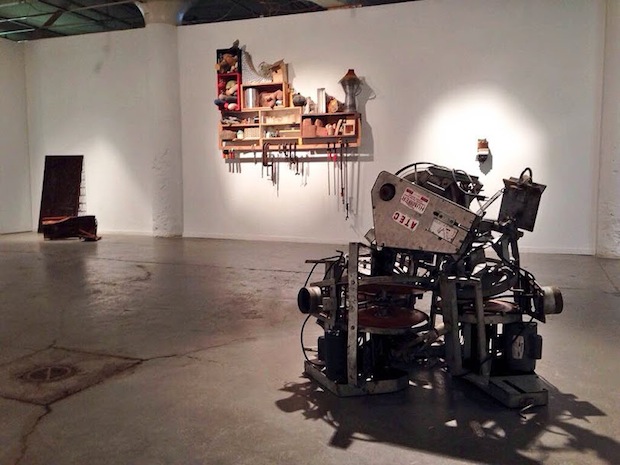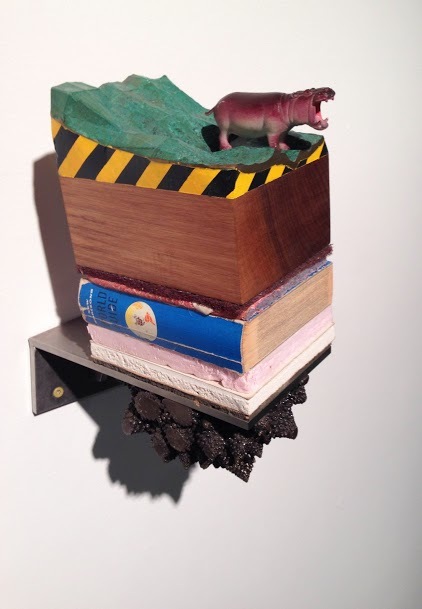Material Affair
Cave Gallery
October 18 – November 14, 2014
Russell Industrial Center, 1600 Clay St., 3rd floor, Detroit, MI
What’s on view: A selection of objects, and found and raw materials not considered to be finished pieces of artwork sourced from artist studios. Curated by local artist, Adam Shirley, the artists exhibited include Anders Ruhwald, Ben Warner, James Viste, Brian Nelson, Iris Eichenberg, Walter Fruge, Scott Berels, Steve Kuypers, Steve Mcshane, Todd Erickson, Adam Shirley and Graem Whyte.
It’s not a new idea to try and recreate the artist’s studio inside the gallery. “Material Affair,” though, fortunately proves that the idea can be carried out in a way that doesn’t fetishize the artistic process. “Material Affair” presents the artist’s studio not as a clichéd, Joyce Pensato-style, paint-splattered sanctuary, but alternately as a workshop, a storage facility, and a place of compiling and categorizing that contemporary, multidisciplinary artists will certainly find true to life. “There are several weird, quiet metalworkers in this show,” says Dylan Spaysky, a member of the artist collective that runs Cave Gallery; indeed, the exhibition reflects the idiosyncratic making and thinking processes of very different artists.
There is a regional bent to this exhibition, and it goes beyond just shared zip codes. According to Spaysky, many artists in Detroit develop a practice that involves collecting, which reflects the most the city’s most bounteous local resources: abandoned stuff and space in which to hoard it. From Steve Kuypers’s studio comes a wad of crumpled machinery which looks something like a cross between Melvin Edwards and Sarah Sze, though in Kuypers’s hands, these raw materials might eventually be sorted out into one of his refined and carefully engineered kinetic sculptures. In James Viste’s installation of found metal objects and railroad spikes, each item is obsessively labeled with the precise latitude and longitude of their origins, emphasizing notions of exactitude and function; his interest in these characteristics makes sense, considering his work as a master blacksmith.
If Kuyper’s metal clump reflects the physical beginning stages of making, and Viste’s catalog of materials embodies the conceptual framework of a process, then Graem Whyte’s sculpture is the closest to “finished.” A small, wallbound diorama features a toy hippopotamus in a mini-landscape atop strata made from wood, books and building materials. Those who know Whyte’s work will be familiar with finished sculptures that closely resemble this one, though in this context, one can imagine that the piece was subject to that final vetting process that every artist employs, and it somehow didn’t make the cut. Typically, the artist is the one with the sole authority to determine if and when a piece is finished and worthy of exhibition, but in “Material Affair,” each artist has relinquished that right. Allowing artist-curator Adam Shirley to interrupt that usual process undermines the artist’s ego in order to create a rather unique type of shared authorship.




Comments on this entry are closed.